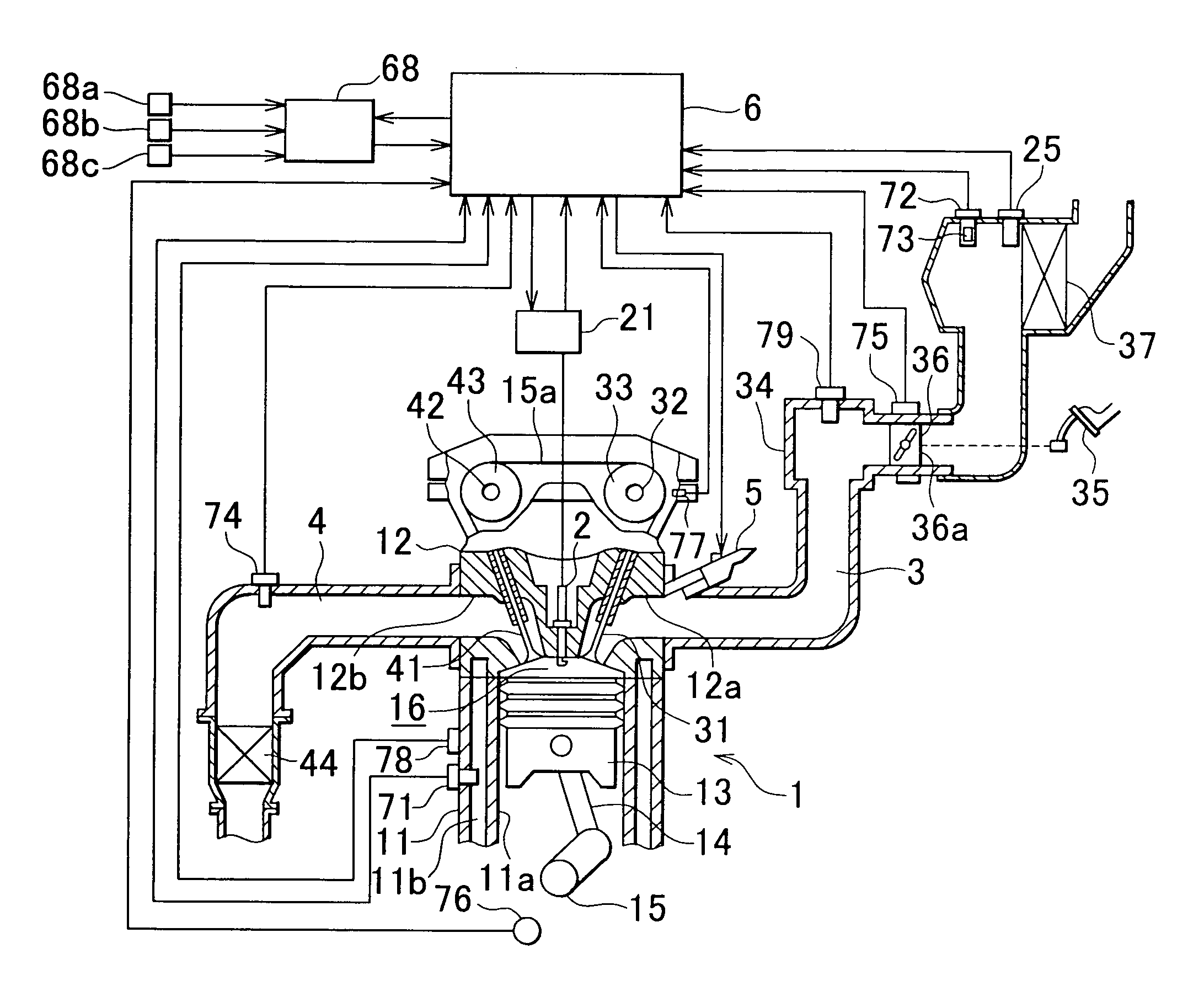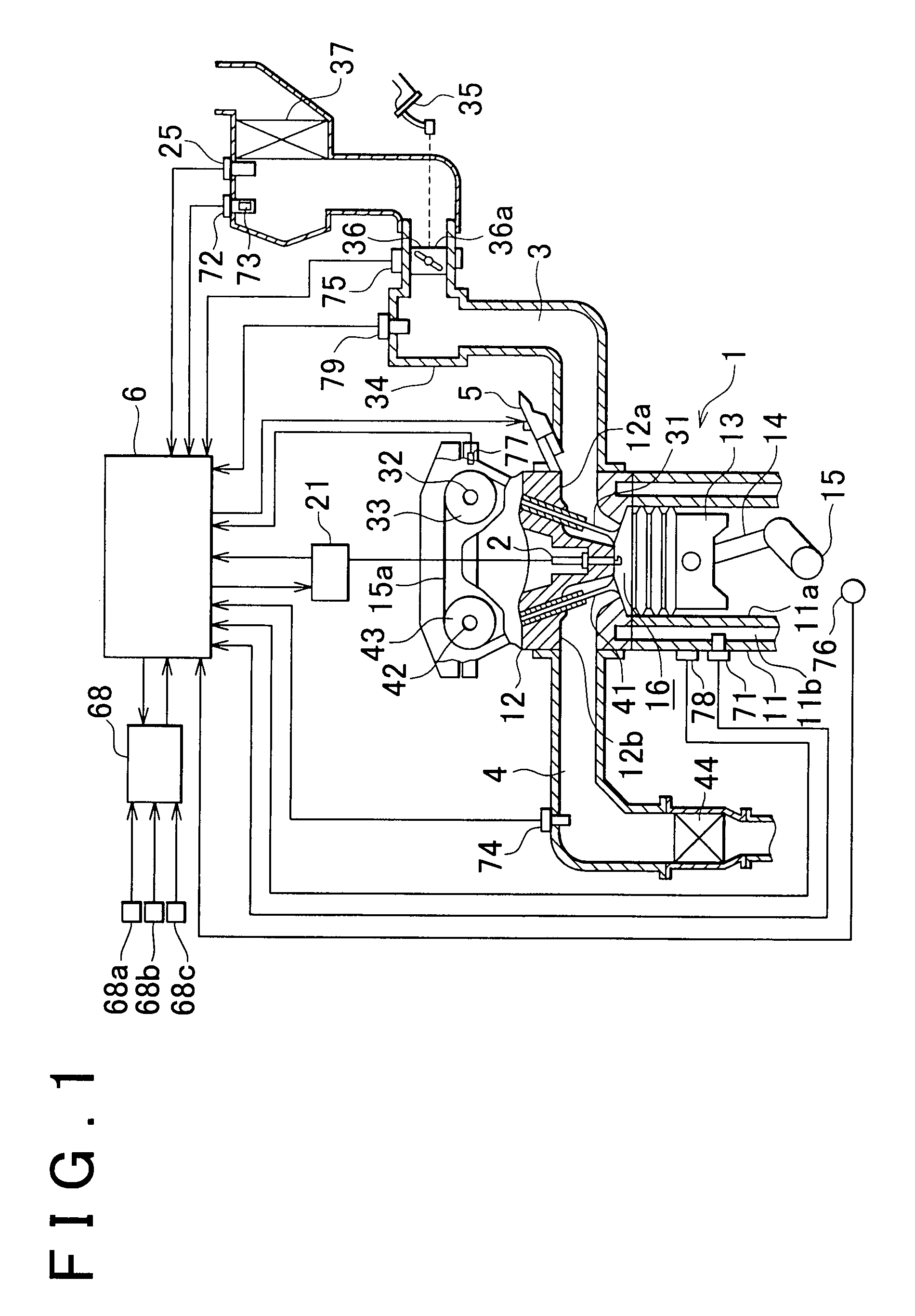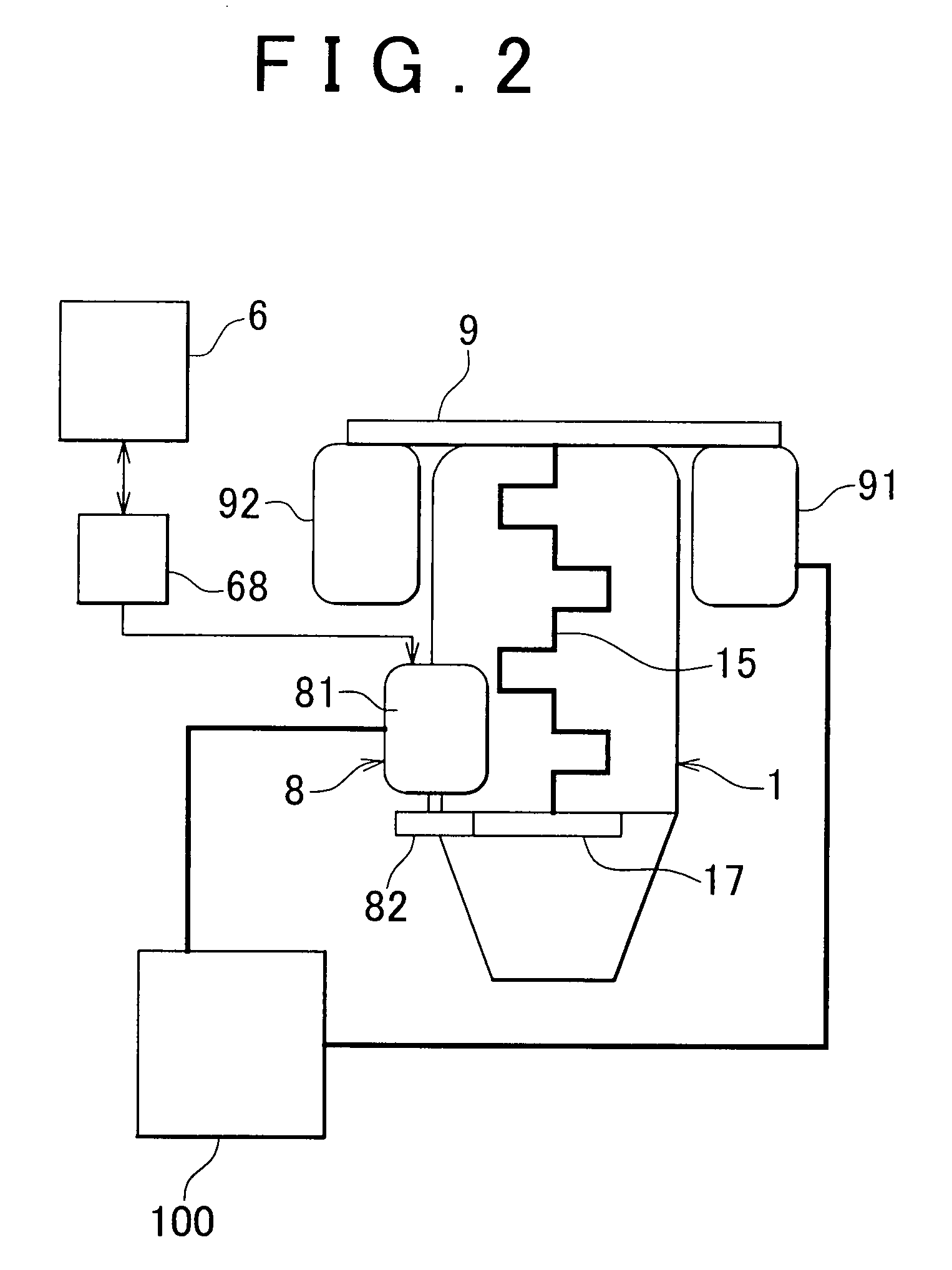Automatic internal combustion engine stop device, internal combustion engine provided with the same and automatic internal combustion engine stop method
a technology of automatic internal combustion engine and stop device, which is applied in the direction of engine starter, ignition automatic control, electric control, etc., can solve the problems of prolonging the time required for engine start, waste of fuel, and affecting the performance of the engine, so as to achieve the effect of short tim
- Summary
- Abstract
- Description
- Claims
- Application Information
AI Technical Summary
Benefits of technology
Problems solved by technology
Method used
Image
Examples
Embodiment Construction
[0053]Hereinafter, preferred embodiments of the present invention will be described with reference to the accompanying drawings. In the present embodiments, description will be given to an instance that the present invention is applied to a multi-cylinder (e.g., four-cylinder) gasoline engine installed in a vehicle.
[0054]First, a schematic configuration of an engine (internal combustion engine) in accordance with an example embodiment of the present invention will be described with reference to FIG. 1. As shown in FIG. 1, the engine 1 of the present embodiment includes a cylinder block 11 and a cylinder head 12, the cylinder block 11 having cylinder bores 11a corresponding to four cylinders (only one cylinder bore is shown in FIG. 1). A piston 13 is slidably provided in each of the cylinder bores 11a and is connected through a connecting rod 14 to a crankshaft 15 serving as an output shaft of the engine 1. Further, there is defined in each of the cylinder bore 11a a combustion chamb...
PUM
 Login to View More
Login to View More Abstract
Description
Claims
Application Information
 Login to View More
Login to View More - R&D
- Intellectual Property
- Life Sciences
- Materials
- Tech Scout
- Unparalleled Data Quality
- Higher Quality Content
- 60% Fewer Hallucinations
Browse by: Latest US Patents, China's latest patents, Technical Efficacy Thesaurus, Application Domain, Technology Topic, Popular Technical Reports.
© 2025 PatSnap. All rights reserved.Legal|Privacy policy|Modern Slavery Act Transparency Statement|Sitemap|About US| Contact US: help@patsnap.com



